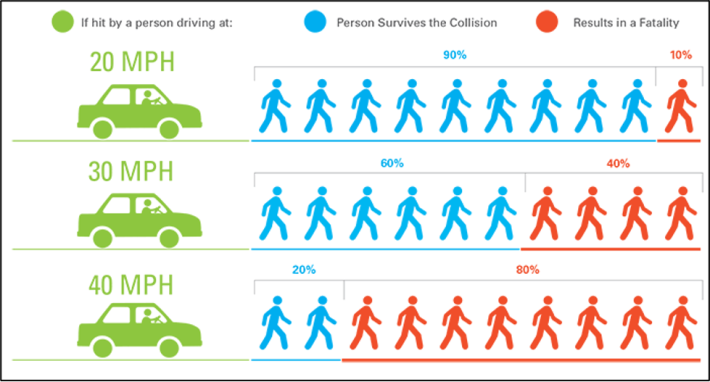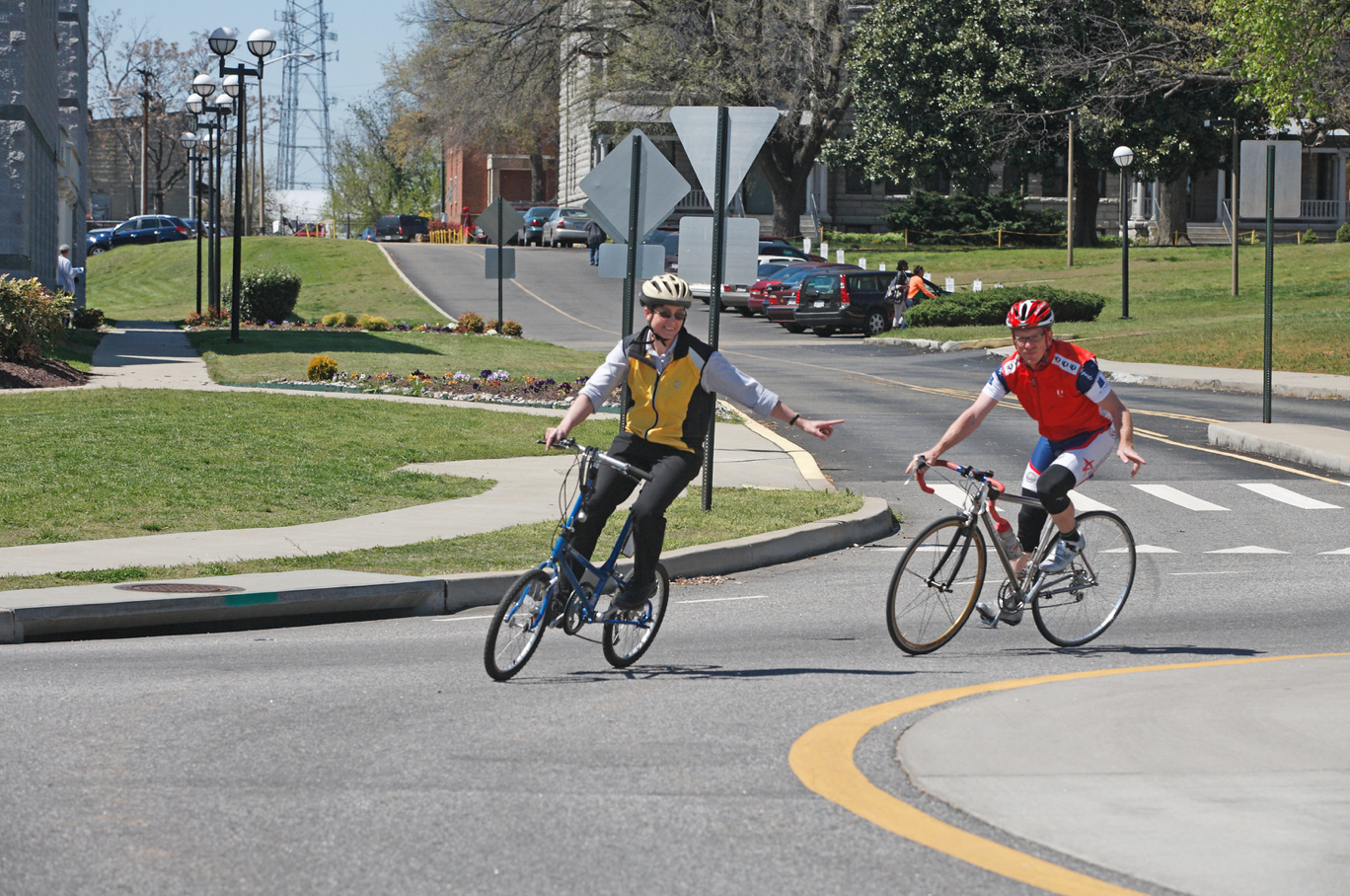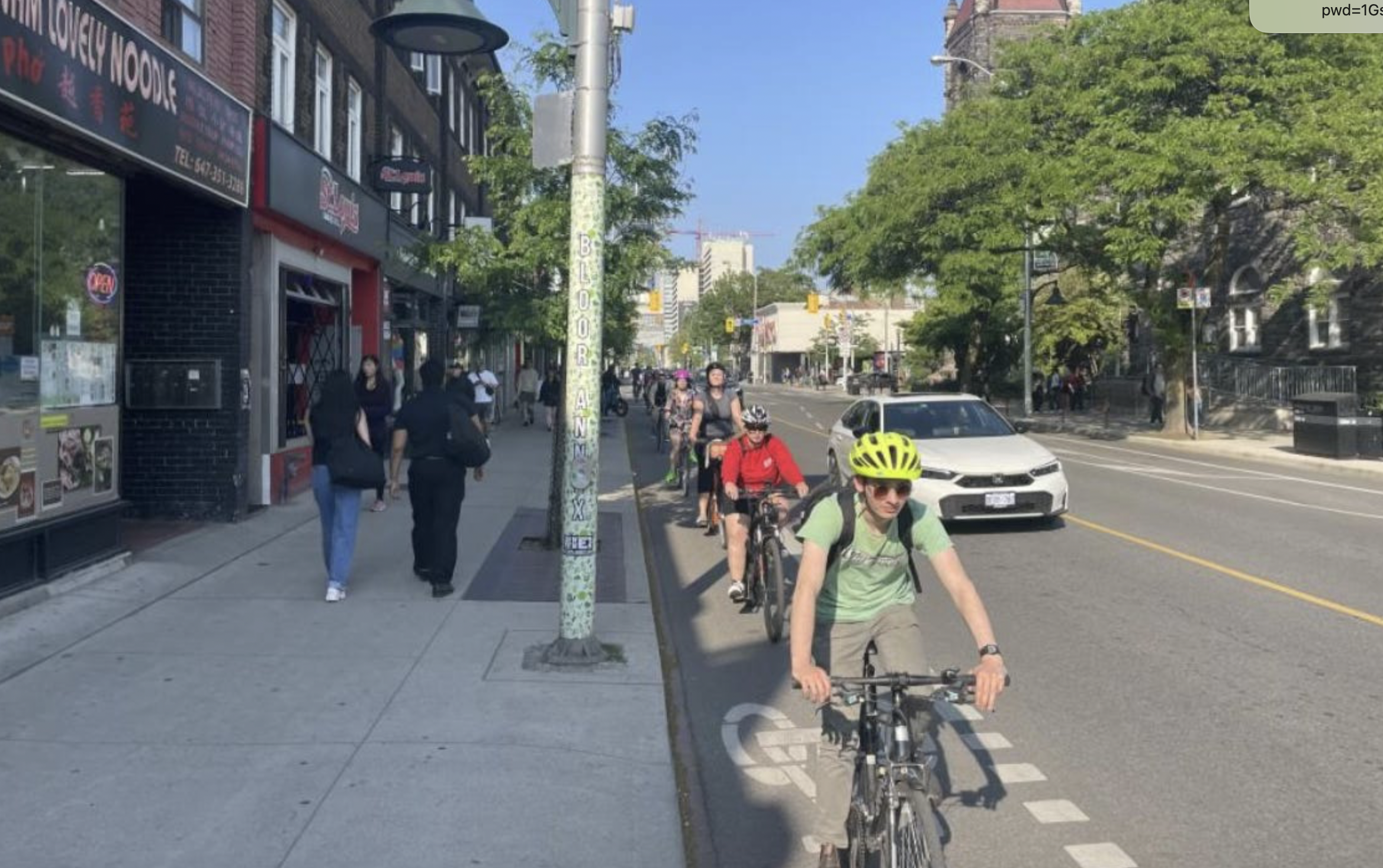Editor's note: This article is the first in a three-part series in celebration of National Roundabouts Week, which runs from September 19-23. Check out the other articles in the series as they're published here.
With the passage of the Infrastructure Investment and Jobs Act — commonly known as the Bipartisan Infrastructure Law — it's clear that we are heading in a new direction in American transportation. The law now recognizes and defines pedestrians and cyclists as “vulnerable road users,” and is both modifying multiple programs and creating whole new ones to address vulnerable road user safety and equity. It also defines a "Safe System Approach" for the first time — something that has been widely successful in European countries and elsewhere in the world for implementing a multi-principled approach to road user safety.
There's also one clause in the Bipartisan Infrastructure Law that doesn’t stand out much, but the very fact it is included in the law is groundbreaking. The clause is under the Highway Safety Improvement Program section, and updates Section 148 of Title 23, US Code to make it clear that such a project can include "an intersection safety improvement that provides for the safety of all road users, as appropriate, including a multimodal roundabout." (Emphasis ours.)
Here's why this is huge: Congress has not only codified roundabouts into federal law for the first time, and put them at the top of the list of examples of highway safety improvement projects. They've also defined them as providing “for the safety of all road users,” including pedestrians, cyclists and people who use assistive devices like wheelchairs — not just vehicle drivers.
Given these actions, the message should be loud and clear: roundabouts provide safety for all users. And I'd argue that they are even safer than traditional traffic signals.
It’s time to “think round” instead of continuing to think of new ways that red, yellow and green lights can solve safety and equity issues for vulnerable road users. With passage of the BIL, Congress has now given the “green light” to roundabout advocates to once again make our case to the American people.
However, there are many in this country that are still skeptical.
In a recent interview for with Bloomberg, Yonah Freemark said, “You could argue [that roundabouts are] not the best for pedestrians or cyclists, but roundabouts are extremely effective at reducing car crashes.”
The actual safety record for roundabouts for vulnerable road users, though, speaks for itself — regardless of any conjecture otherwise.
Although there is no known, official collection of crash data for roundabouts nationwide, Scott Batson, a traffic engineer from the Portland Bureau of Transportation, has been unofficially tracking fatalities at roundabouts since the early 2000s from publicly known crashes. From that data, there have been only 10 vulnerable road user fatalities at roundabouts — six pedestrians and four cyclists — since they were first installed in the US in the early 1990s. None of those fatalities are known to have occurred in a marked crosswalk located along one of those roundabouts, either.
Compare those numbers with the many vulnerable road user fatalities that have occurred at signalized intersections in the United States. Each year between 2015 and 2018, around 750 to 800 pedestrians and 120 to 160 cyclists were killed on U.S. roads, according to the Federal Highway Administration — more than 75 times the number of deaths that have ever occurred at a U.S. roundabout. And it's important to note that every year, about 50 of those deaths were due to red-light running, which is not possible at a roundabout.
Now obviously, there are far more traffic signals than roundabouts — an estimated 300,000 of them and growing — so you would expect fatalities to be higher at signalized intersections anyway. However, when the data for 2015-2018 is compared per traffic signal and per roundabout (assuming a static 300,000 signals and 6500 roundabouts), yearly vulnerable road user deaths per roundabout were 38 times less than per signalized intersection.
For fatal vehicle crashes, however, that multiplier lowers to around five times less than at a signal. So even though roundabouts have been tremendously safe for vehicles, they were even more so for cyclists and pedestrians.
We may have proven the above statement to be true with crash data, but it’s also a matter of physics. Put simply, roundabouts lower the amount of kinetic energy in a crash, because of their curved geometry that automatically lowers the speed of approaching vehicles to around 20 to 25 miles per hour, and keeps that speed low until the vehicle has exited the roundabout.
That benefit simply doesn’t exist at signals that are designed to operate at the posted speed limit when the light is green — which could be 35 to 45 miles per hour or higher on some roads.

This is why signalized intersections are far more dangerous than roundabouts for crossing pedestrians and cyclists in corridors that have speeds higher than 25 miles per hour. Safety only exists if drivers are alert and undistracted, and if they actually stop at the red light to allow the user to cross. If they don’t, and they hit the crossing pedestrian or cyclist, the result has a significant chance of being tragic. Whereas at a roundabout, regardless of the speed of the corridor, the speed of the vehicle has been lowered by design to the point where survivability of a crash for a vulnerable road user is far higher.
It is also why constructing more roundabouts instead of signalized intersections should be a key component of a Safe System Approach, which requires road designers to accept the inevitability of human error. As seen from the data and the basic physics, roundabouts are much more forgiving to vulnerable road users if people make mistakes and a crash occurs.
User equity is also important, both in terms of mode and accessibility. Roundabouts are currently being designed, as the BIL states, as a multimodal intersection. Signalized intersections, on the other hand, were designed in the first half of the 20th century to give vehicles priority with only an accommodation for vulnerable road users — and not much has changed since.
Thanks to the Uniform Vehicle Code, which was predominantly influenced by automobile manufacturers, state laws are also written so that pedestrians and cyclists do not have the right-of-way at a signalized crossing. Instead, they must wait for a specific, timed phase to legally cross, like a crosswalk signal.
However, the code also states at an unsignalized crossing — such as at a roundabout — the vulnerable road user within the marked crosswalk automatically has the right-of-way, as long as they are crossing the road on the same side as the approaching vehicle. Crossings are also not timed, so users with mobility challenges can take as much time as they need to cross, and no waiting is required.

Roundabouts have other vulnerable road user safety benefits, too. They often have shorter crossings than signalized intersections, and users only need to look at approaching traffic in one direction. Roundabouts also automatically provide refuge with "splitter islands," allowing those users with mobility challenges to rest before crossing the other direction. Cyclists also don’t have to worry about being picked up by sensors or detectors in order to legally proceed through a roundabout.
There has also been extensive research done to determine how to improve the comfort of blind and visually impaired users when using a roundabout, since some have a hard time distinguishing circulating traffic from exiting traffic when trying to cross a roundabout exit. Since a 2017 report from the National Cooperative Highway Research Program, though, experts have identified several treatments to help address this, such as raised crosswalks which increase vehicle yielding and further reduce speeds, as well as staggered offset-left cut throughs on splitter islands, which allow for a better audible determination between circulating and exiting traffic. I actually used both of these treatments in a roundabout that I designed in Orono, Maine that was built in 2018.
"[Editor's note: The author of this article subsequently clarified that this text does not intend to indicate that "problems [with roundabouts for blind and visually impaired pedestrians] were completely solved, [but] rather that these treatments have significantly improved the experience of blind and visually impaired users where they were incorporated into roundabouts.]"

While I would agree the ultimate safety and equity solution for vulnerable road users is to significantly reduce the amount of motor vehicles on the road, this simply isn’t a current reality in the United States of America because of how ingrained the automobile is in our society. Instead, we need to look at realistic solutions that can be implemented now to reduce the unacceptable serious injuries and deaths of vulnerable road users.
Roundabouts provide safety and equity benefits that signalized intersections cannot match, regardless of current comfort levels with the technology, and regardless of how much “smarter” those signals might get. Replacing traffic signals with roundabouts and building more roundabouts instead of traffic signals is an immediate action that we can take.
During this National Roundabouts Week, it’s a perfect time for Americans to fully embrace roundabouts as both a short and long-term solution for vulnerable road user safety and equity. It’s time to think round.
Jonathan French is a transportation engineer from Hallowell, Maine with over 12 years of experience in roundabout design, guidance and policy. He co-founded and currently serves as a board member of Build the Era, a transportation education and advocacy organization. He is also a member of ITE and the ITE Roundabout Standing Committee. You can follow him on Twitter @JTrea81 and follow Build the Era @buildtheera.







